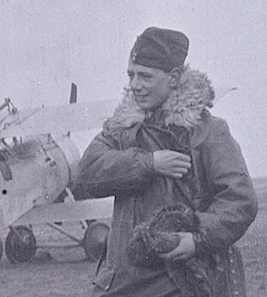Related Research Articles

Captain William James Arthur Duncan was a Canadian aviator and a professional ice hockey player, coach, and general manager. In 1926 he served as the first team captain, head coach, and general manager of the Detroit Cougars of the National Hockey League (NHL).
Captain William Melville Alexander was a Canadian First World War flying ace, officially credited with 22 aerial victories.
Arthur Bradfield Fairclough was a Canadian First World War flying ace, officially credited with 19 aerial victories.
Captain Keith Knox Muspratt was an English First World War flying ace in the Royal Flying Corps with eight victories to his name.
Flight Lieutenant James Anderson Slater was a British First World War flying ace, credited with 24 aerial victories. He served in the Royal Air Force (RAF) as an instructor after the war until killed in a flying accident.

Major William John Charles Kennedy-Cochran-Patrick DSO, MC & Bar was a Scottish First World War flying ace, credited with 21 aerial victories. He was the leading ace flying the Spad VII fighter, and of No. 23 Squadron. He later flew aerial surveys on three continents.
Captain Conrad Tolendal Lally was a World War I flying ace credited with five aerial victories. His valorous military service was matched by his devotion to serving his home town and community in peacetime.
Captain William George Sellar Curphey was a British World War I flying ace credited with six aerial victories.
Flight Lieutenant William Geoffrey Meggitt was a British World War I flying ace credited with six aerial victories.
Richard Raymond-Barker, MC was a British aviator and flying ace, credited with six aerial victories in the First World War. He was Manfred von Richthofen's penultimate victim.
Captain Henry Hollingdrake Maddocks was a British World War I flying ace credited with seven aerial victories.
Captain Owen John Frederick Scholte was a British flying ace of the First World War, credited with eight aerial victories before his death in an automobile accident.
Major John Bowley Quested was a First World War flying ace from England. He was credited with eight aerial victories, the most notable of which was over Gustav Leffers.
Lieutenant Colonel Alan Machin Wilkinson was a British First World War flying ace credited with nineteen aerial victories. He was one of only about 25 pilots twice awarded the DSO during the war, five of whom were also holders of the Victoria Cross.
Flight Lieutenant David Arthur Stewart, was a British First World War flying ace credited with sixteen aerial victories. Remarkably, they were all scored while he was flying bombers instead of fighters.
Air Commodore Alan Duncan Bell-Irving was a Canadian First World War flying ace credited with seven aerial victories while serving in the British Royal Flying Corps. He also served in the Royal Canadian Air Force during the Second World War.

Major Arthur Willan Keen was a British World War I flying ace credited with fourteen aerial victories. Keen won his first decoration before ever seeing combat when he saved a fellow pilot from drowning on 17 June 1916. Once in France, his combat record saw him promoted to flight, then squadron commands. The latter posting made him a major at age 23.
Captain William Lewis Wells was a British World War I flying ace credited with ten aerial victories. His exceptional valour twice won him the Military Cross.
Captain Saint Cyprian Churchill Tayler MC was an English World War I flying ace credited with nine aerial victories. He scored those victories while flying for two different squadrons, using three types of aircraft.
Captain John William Aldred was an English World War I flying ace credited with eight aerial victories. He began military service in World War I as an infantryman and transferred to flight duty as an observer. After scoring two aerial victories and winning the Military Cross, he qualified as a fighter pilot, scored six more triumphs, and earned a Bar to his MC in lieu of a second award.
References
- ↑ "William Drummond Matheson". theaerodrome.com.
- ↑ "No. 29852". The London Gazette (4th supplement). 7 December 1916. p. 11944.
- ↑ "No. 30064". The London Gazette (2nd supplement). 11 May 1917. p. 4591.
- ↑ The Aerodrome